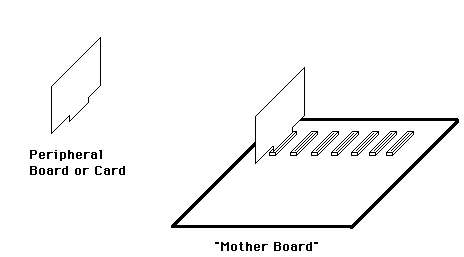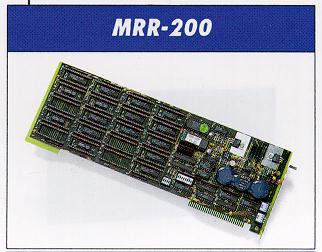



| A traditional set-up for a computer system includes the components and the connections diagramed below. |

|
|
|
| The so-called "Mother Board" serves as an anchor for many of the computer's components. |

|
|
|
| Located on the mother board, the ROM and RAM systems both connect to the computer's central processing unit, which in turn connects to the central memory board. |

|
|
|
| When examined in more detail, a computer can be broken down into a number of individual integrated circuits, commonly known as chips. Each chip represents a specific function performed by the computer. |

|
|
|
| Finally, within each integrated circuit, it is possible to break things down even further, this time to the level of silicon chips, which act as circuits within a circuit. |
|
|
While the diagrams above show schematically how a some components of a computer work, it is often helpful to see what they look like as well. Below is an example of a RAM/ROM Controller, manufactured by Mitac Industrial Corporation in Fremont, California.

Essentially, the difference between Read Only Memory (ROM) and Random Access Memory (RAM)is fairly simple. Both are high speed functions that work together to allow a computer to process information efficiently and safely.
ROM refers to the part of the computer that can not be changed. Any applications that are part of the start-up programs, or that come already installed, are usually in the ROM memory. ROM can not be altered, only read, hence the name.
RAM refers to applications that allow the user to make changes and save them, to write as well as read. As a result, applications often take longer a bit longer to open than if they were ROM files.
For more on ROM v. RAM, see a summary of differences between ROM and RAM.

|

|
This site was created especially for students of the UNC School of Journalism's JOMC 050 Class, and anyone else who may be interested. For more information, please contactdaikat@email.unc.edu |